Contact us directly to discuss your specific requirements, help you with purchasing, or with any other questions.
This "how-to-connect" documentation will explain the initial configuration of an example connection from NTFS Extended Attributes to a SharePoint Online Library in Office 365. We will be synchronizing data stored in NTFS Extended Attributes from files.
This guide presupposes that you have installed the Layer2 Cloud Connector and that you are familiar with its basic functionality. The Layer2 Cloud Connector User Documentation will provide you with all necessary information.
2. Configuring the Layer2 Cloud Connector
2.2 Configuring the Data Entity 1
2.3 Configuring the Data Entity 2
You only need the path to the folder with the files you want to get the NTFS extended attributes from. In our case C:\Users\csantos\Downloads\Pictures.
Create a new connection by using the Create New Connection option in the Actions pane (right-hand side). The new connection will appear at the bottom of the Connection Manager List (left-hand side). Click on your newly created connection to open the connection configuration settings.
Choose a meaningful name for your connection and replace the current "New Connection" Connection Title with it.
The Extended Properties field is read-only. therefore this scenario only supports one-way synchronizations. Choose Left to Right as Synchronization Direction.
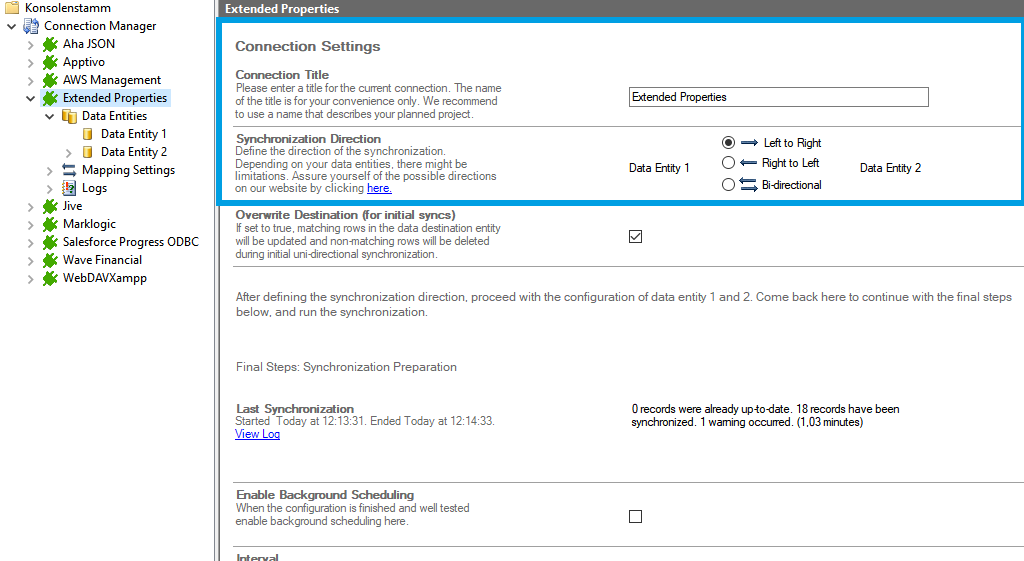
We will now set up our Data Entities. Go to the data entity “Data Entity 1” to open the configuration settings.
Choose a Data Entity Title. It is recommended to give your entities meaningful names to maintain an overview when you decide to set up multiple connections.
Select the Data Provider for NTFS Extended Attributes from the data provider list. You can search for NTFS Extended Attributes by typing into the selection box.
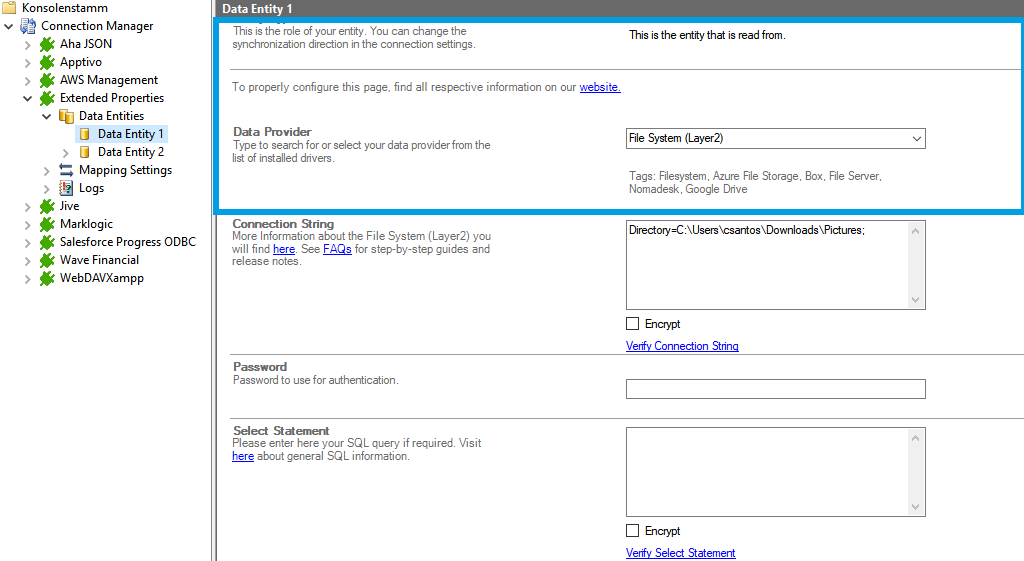
For the Connection String, we need the in step 1 mentioned information. You can copy the below connection string and adjust it to match your gathered information. Use the Verify Connection String option to evaluate if the provided connection string is valid.
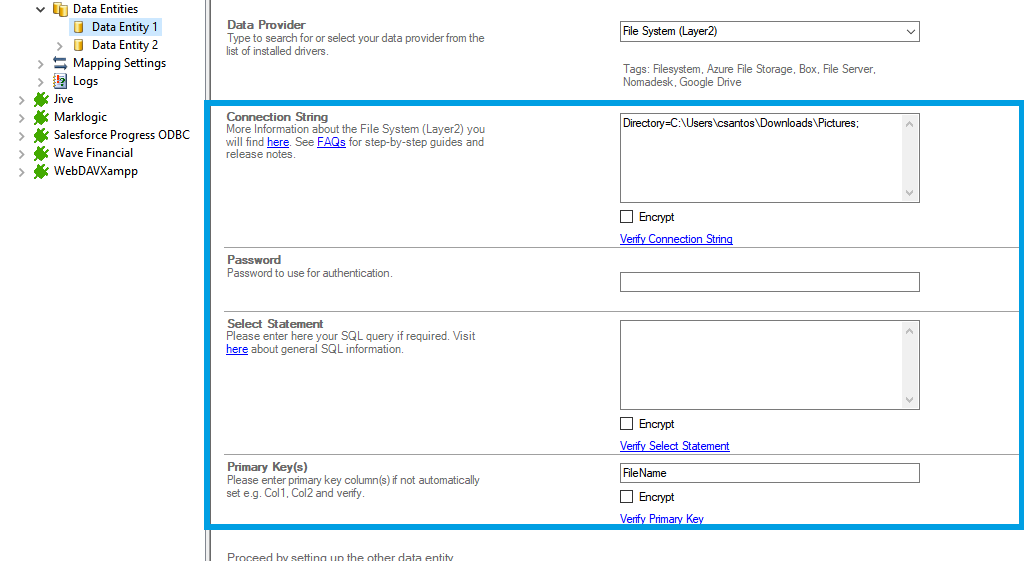
Directory=C:\Users\csantos\Downloads\Pictures;
Enter the user account's password into the Password field. The field masks the value for better security.
The Select Statement text box is used to define specific data queries. We do not need it for this synchronization.
To check if all necessary columns are received, you can use the Preview Data option on the right-hand pane which will provide you with a pop-up window showing your sample data from your files. In the column "ExtendedAttributes" you will find all the NTFS attributes for each file.
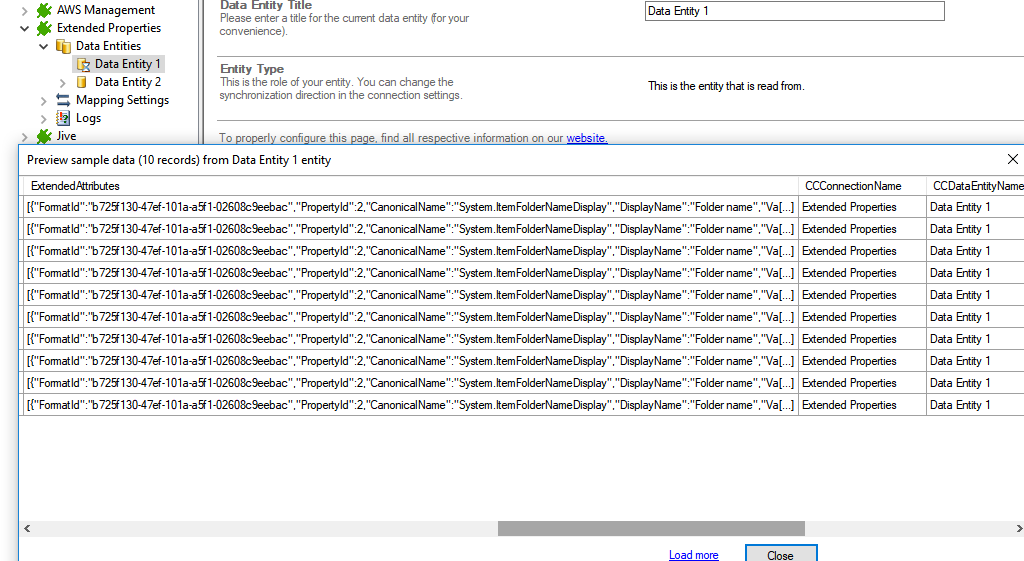
To receive each individual value we will make use of the Dynamic Columns Feature that the Layer2 Cloud Connector offers. But before we can start, you will have to make an initial synchronization to your SharePoint Online Library which will only synchronize the ExtendedAttributes in unformatted JSON.
Your SharePoint location should contain one multiple line of text column which we will map against the ExtendedAttributes field on the file system entity. See section 2.3 for further information on how to connect your library and continue with the below steps once you finished your setup.
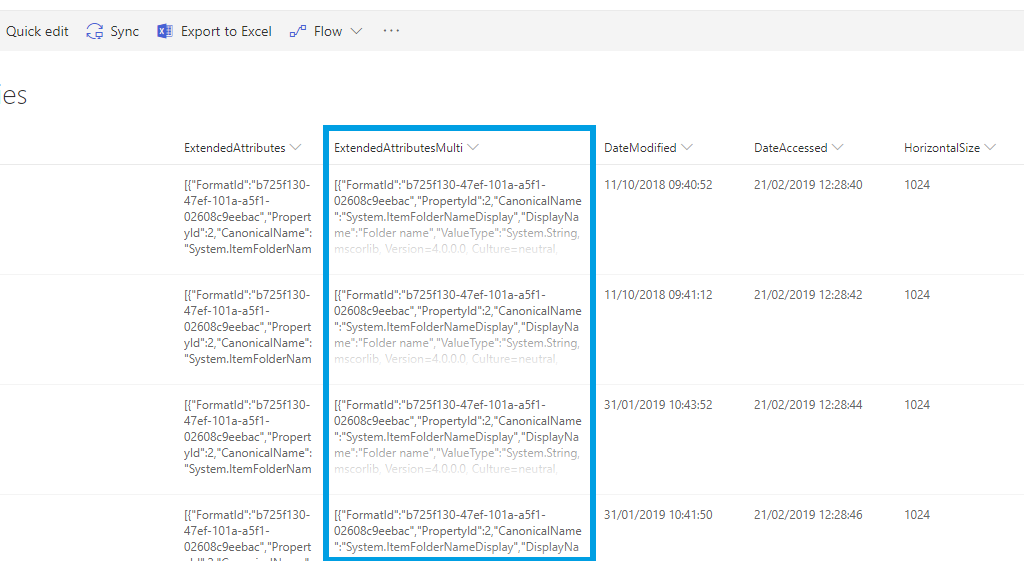
After the ExtendedAttributes have been synchronized to your library, copy the content from one ExtendedAttributes cell and use an editor to format the properties in order to see all available attributes. We recommend to use a JSON formatting tool to beautify the JSON code.
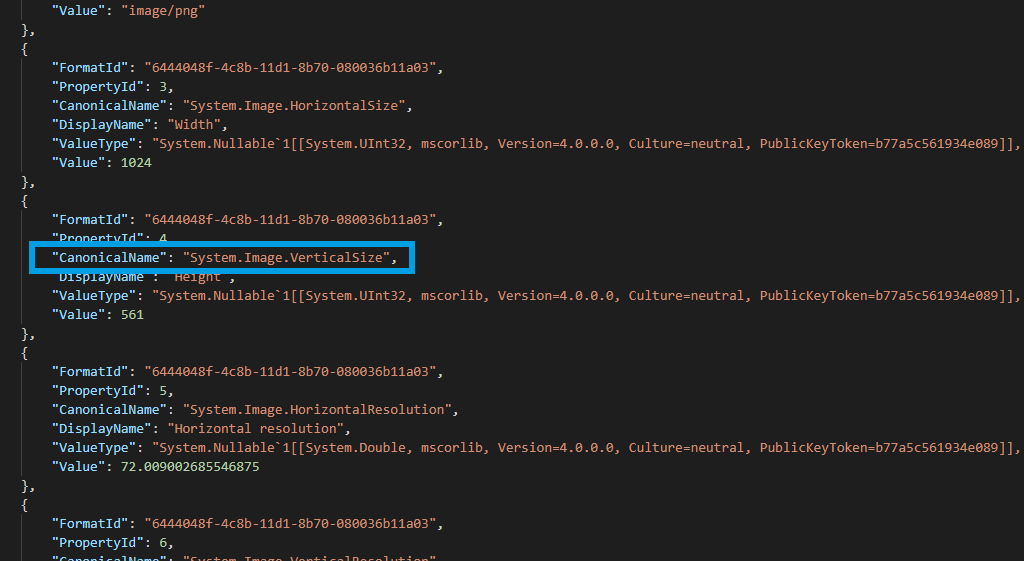
We can map the fields through their names. We are getting the CanonicalName field values. Go to you Data Entity 1 Advanced Settings and add a new Dynamic Column. Give it a name and use the code snippet in the expression field like this:

get { return JsonConvert.DeserializeObject<List<Dictionary<string, object>>>(ExtendedAttributes) .Where(x => x["CanonicalName"]?.ToString() == "System.Image.VerticalSize") .Select(x => x["Value"]?.ToString()) .FirstOrDefault(); }
Repeat the insertion from custom columns and code snippets for each Extended Attribute field you want to retrieve information from.
We are going to send the data to a custom SharePoint Online library. It's required that you set up this library prior to the next steps. Your library should contain matching columns according to your source entity.
Use the left-hand pane to switch to the data entity "Data Entity 2". We will be using the Layer2 SharePoint Provider for this setup.
For more information about the SharePoint provider visit:
https://www.layer2solutions.com/support/cloud-connector-faqs/layer2-csom-sharepoint-ado-net-provider.
You can copy the below Connection String which contains the minimum of required properties to connect to your custom SharePoint Online library.
URL=https://your_custom_sharepoint_library_url/AllItems.aspx;Authentication=Microsoft_Modern;
Save your changes by using the right-hand pane option Save Changes.
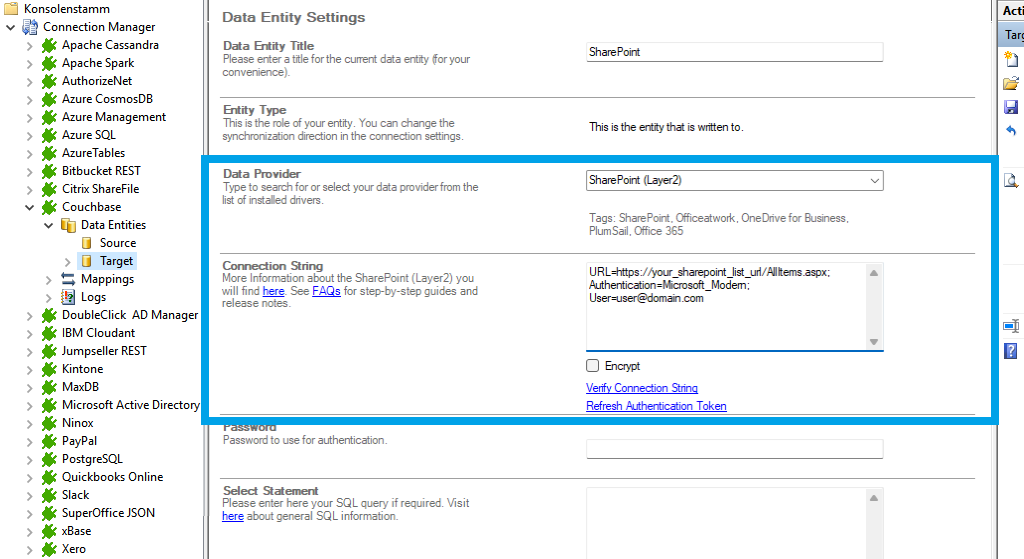
In the next step, we will configure our mapping settings. Click on the Mappings option on the left-hand pane. If your fields from SharePoint are named identical to the fields from your source system, the Enable Auto Mapping option will match those columns. Disabling this option allows you to match your columns as needed. We enabled auto-mapping in our setup. Save your changes by using the right-hand pane option Save Changes.
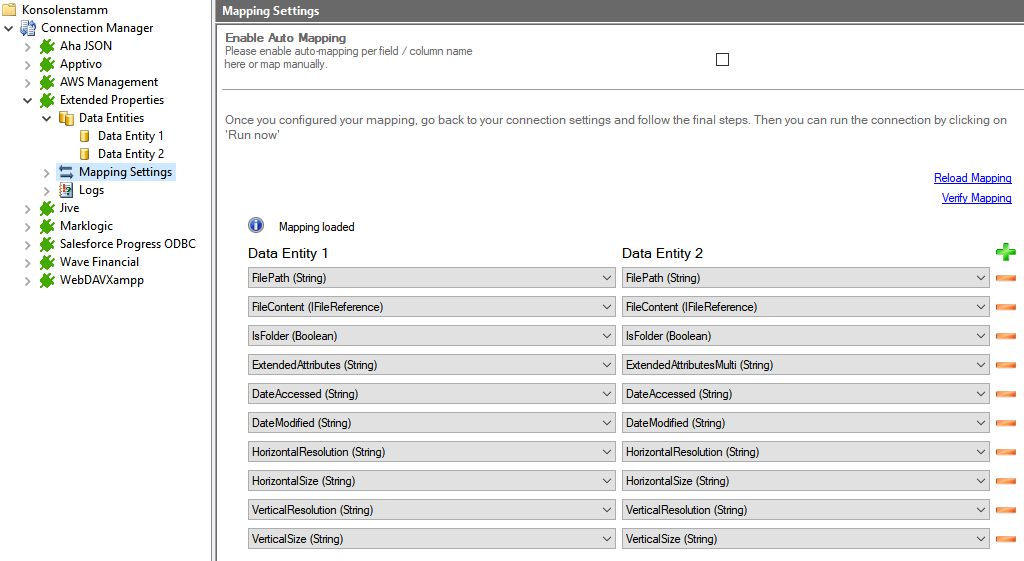
To run your connection switch back to the main connection configuration node and use the Run Now Button located on the bottom of the setup page. The Run Synchronization Toolbox will also display the synchronization process.
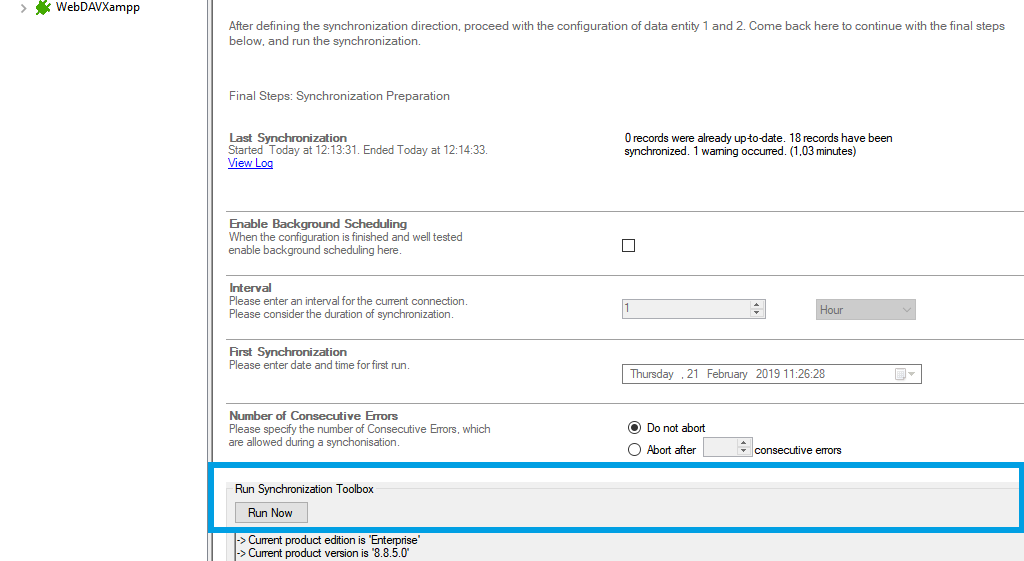
Below is a data preview of the information we have accessed in our source entity:
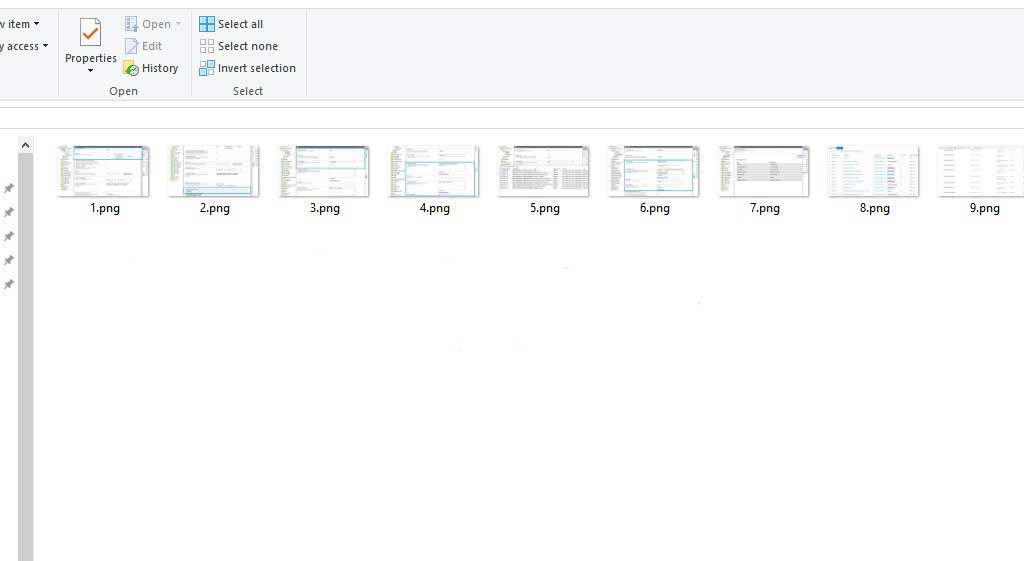
This will be the result in our SharePoint Online library after our initial successful synchronization:
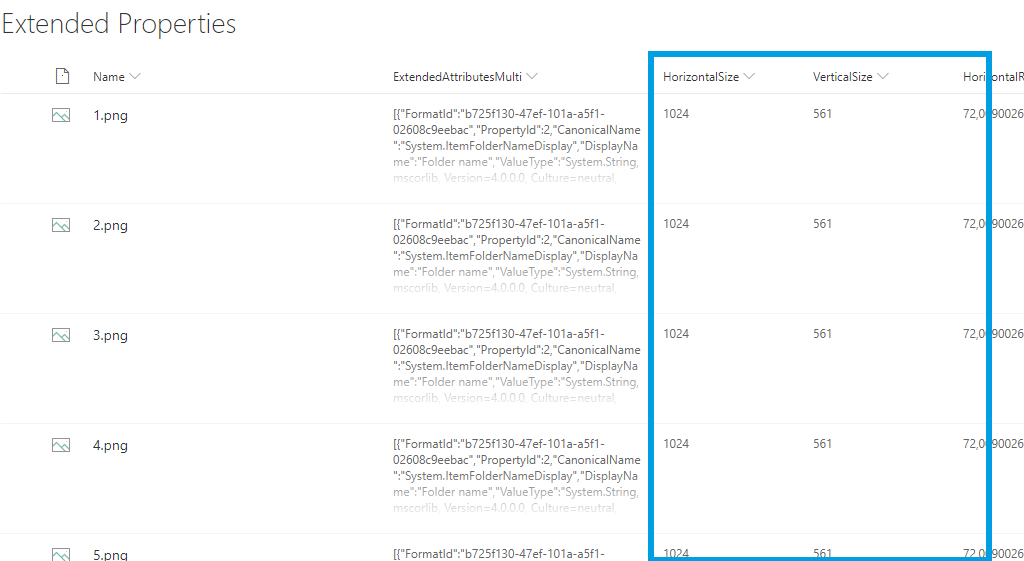
As far as tested, this connection supports uni-directional only.